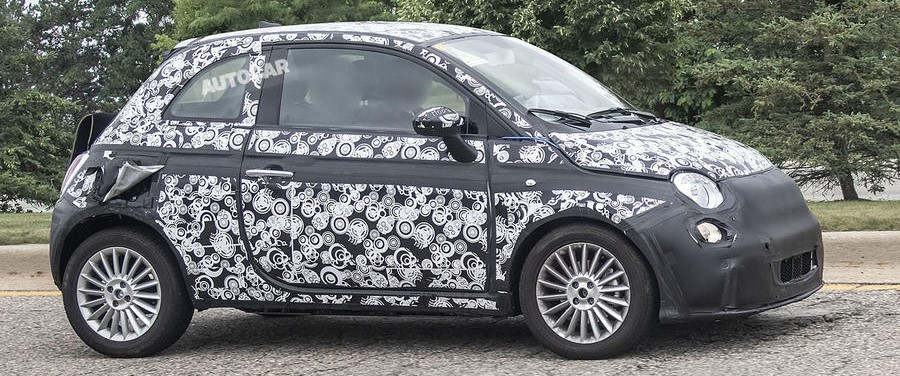
The electric version of the Fiat 500 is the next FCA’s big bet in Europe. The company announced an investment of 700 million euro in its Mirafiori plant in order to start the production of this model in Q2 2020. The news about it are all missing two major details: the sales target is quite ambitious and the ICE versions will continue to use the current platform.

One year after the death of Sergio Marchionne, the company has finally joined the electrification boom seen in the industry since 2015. It is a bit late, as usual with FCA, but the attempt is more than welcome, and gives some oxygen to the troubled operations of the automaker in Europe.
Fiat 500 BEV different from rest of lineup
The electric Fiat 500 made in Italy is likely to use a new platform and be sold as a different model from the rest of the 500 lineup. For the ICE versions, instead of introducing an all-new generation (the current one has been in the market since 2007), the brand is expected to show another deep restyling.
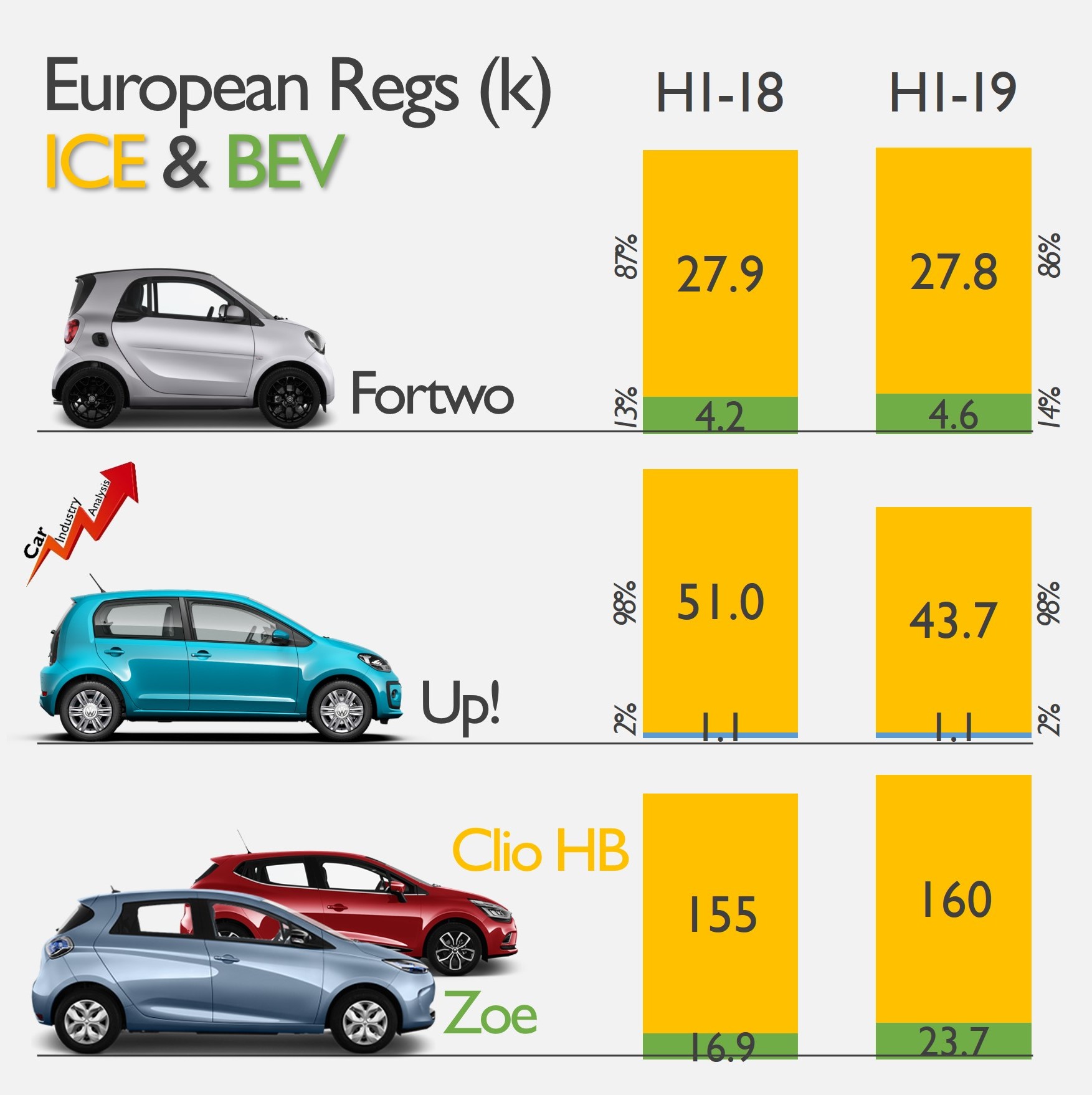
In fact, this information is in line with the latest plans published by FCA. They never talked about an all-new generation for the gasoline versions, but only about an all-new BEV version due to arrive in 2020.

At this point the question is whether Fiat will keep or not the model until 2025, when it will turn 18 years. We must remember that the first generation of this car was available from 1957 until 1975. This could be also the case, especially if the electric version meets the targets.
80,000 units per year, it will all depend on the price
The Fiat 500 is positioned as a semi-premium car, whose price is always higher than the rest of city-cars available in the market. The iconic Fiat is between 16% and 43% more expensive than its rivals, according to data from JATO. Nevertheless, it outsells all of them by far.

In contrast to many of the models in its lineup, FCA has been successful in positioning the Fiat 500, selling a lot despite its higher price, and earning money; and the most important, despite its age. The management’s new goal is to replicate this strategy in what is expected to become a booming market – the EVs.
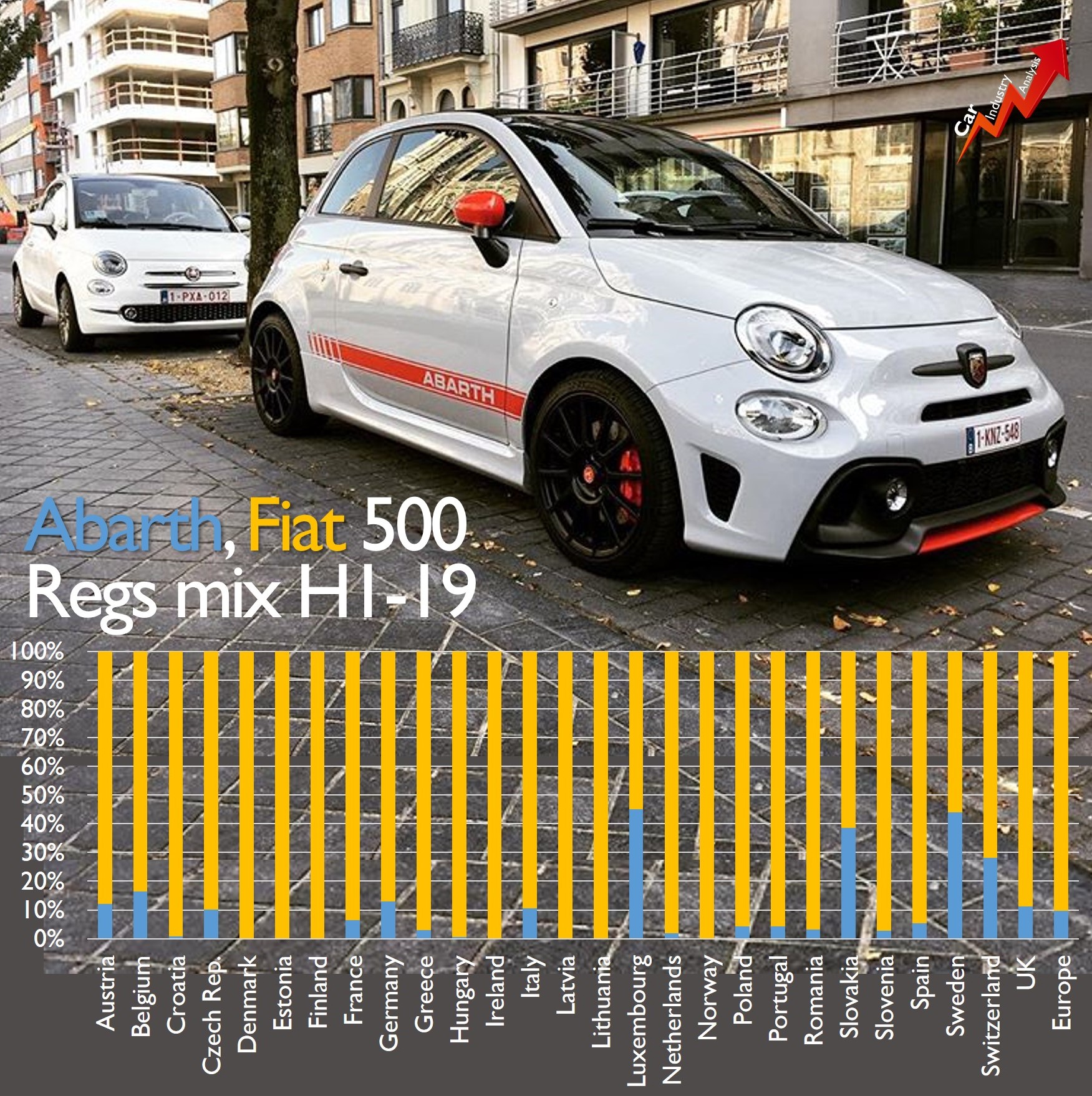
The current information suggests that the electric version of a city-car is between 60% and 80% more expensive than its ICE counterpart. This is the case of the current Smart Fortwo EV, whose price is 60% more expensive than the gasoline version. In the case of the Volkswagen Up, the price gap is 10,600 euro.
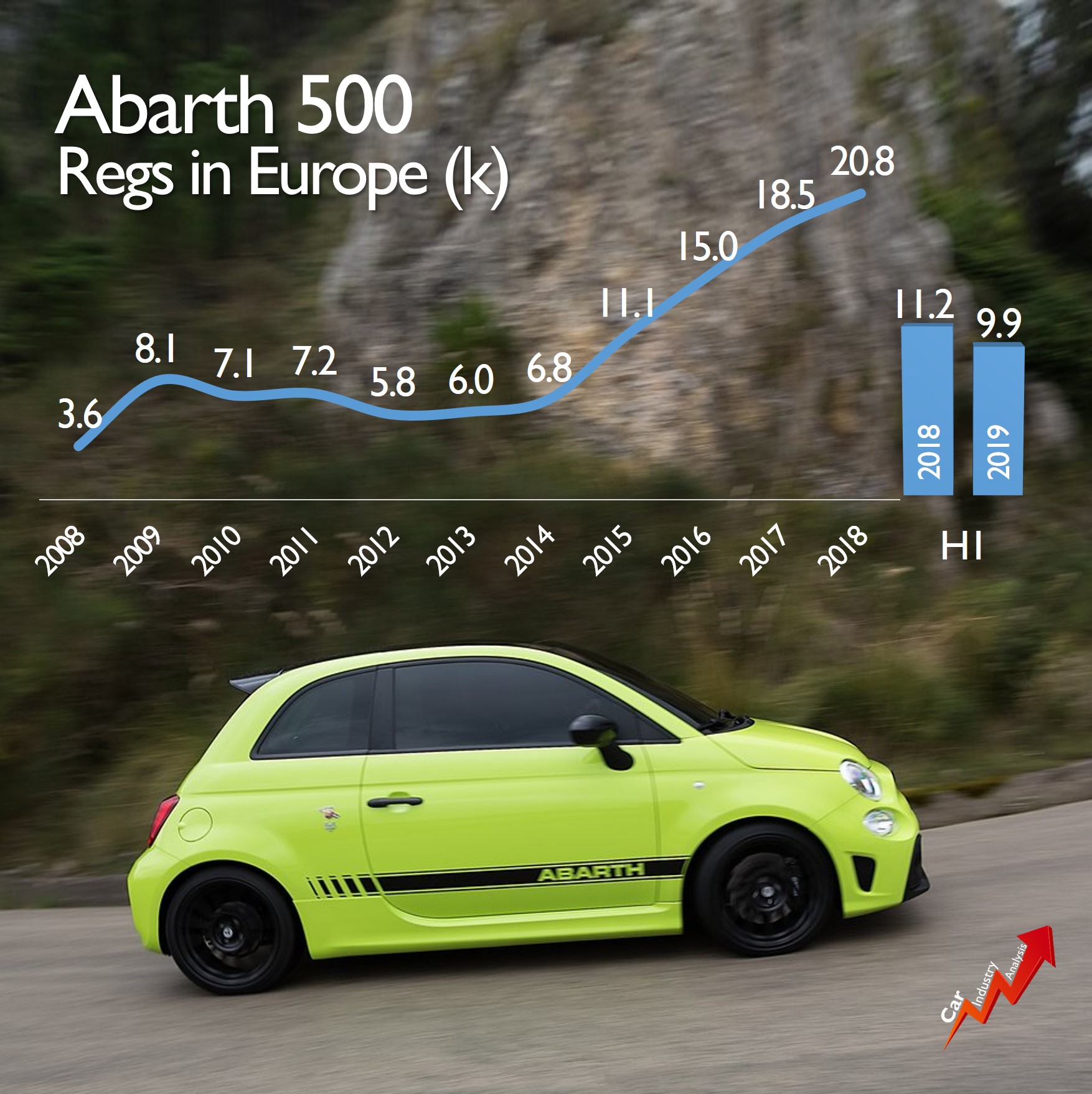
The gap is a bit lower going up in the segments. For example in the B-segment, the Renault Zoe is 59% more expensive than a Clio, even if the former is smaller. In the best of the cases, an electric 500 would be priced starting from something around 21,000 euro for a very basic trim, and would go up to 33,600 euro.
Abarth or BEV?
The estimated price range for the Fiat 500 BEV would be quite similar to the current prices of the Abarth 500. The entry price of an Abarth 500 is 19,400 euro, and goes up to 31,900 euro. This means that many consumers would have to chose between the green or the performance version.

They both target two different types of consumer. In theory, they would not compete. Nevertheless, we must remember that the Abarth is not a popular car. Its volume counts for only 10% of the whole 500 registrations in Europe, and in H1 2019 it posted a 12% decline on its registrations volume.

In other words, a pricey 500 finds definitely fewer clients. Last year the registrations of the Abarth 500 set a new record in Europe with almost 21,000 units. This total is quite far from the 80,000 target for the BEV version that is due to happen in 2021.
BEV European demand to reach 500,000 units in 2021
The good news for Fiat is that the BEV market is booming in Europe. According to the latest figures from JATO, a total of 173,200 units were registered in Europe through June 2019, up by 84%. The good momentum is being fueled by more choices, better incentives and the war against the diesel.
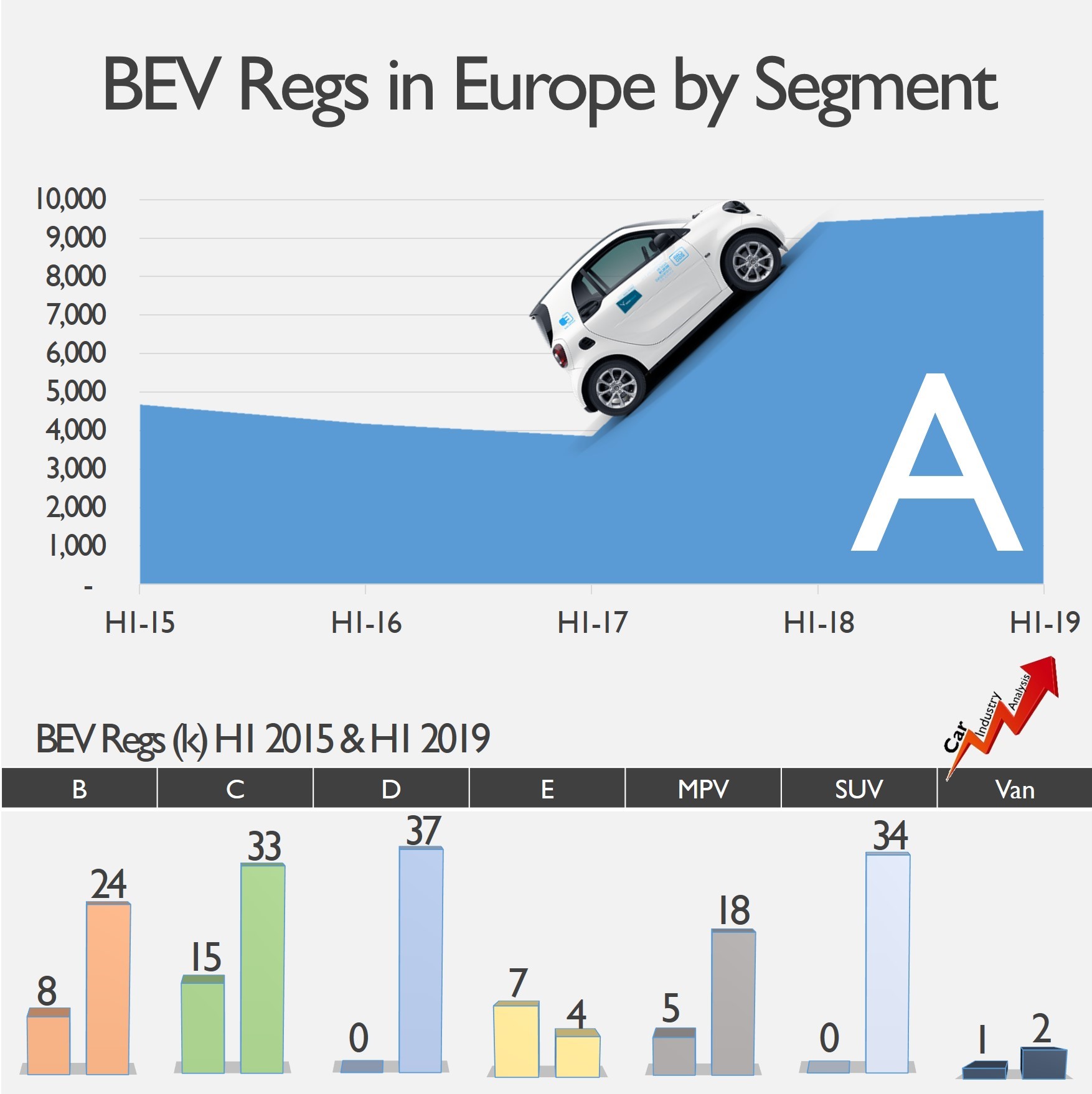
If the trend continues and new launches hit the dealers in the coming months (VW ID3, Peugeot 208-e, Mini electric, etc), this year the registrations volume could total around 350,000-380,000 units. In 2020 the demand would continue growing up to 490,000-520,000 units, and in 2021, the first full year in the market of the Fiat 500 BEV, the overall market could sell more than 700,000-800,000 units. Will Fiat be able to control between 11% and 12% of this market in 2021? I doubt.
Source: ACEA, OICA, FGW database, European Commission, The Economist




















If the are going to use the same platform, it’s going to be a huge fail on NCAP.
LikeLike
I think the current development work is to add forward collision radar and chassis safety reinforcement to meet current encap..
LikeLike
LOL
Fiat 500 BEV will use an all new dedicated BEV platform. That’s the only truth.
ICE versions of 500 will be facelifted.
LikeLike
Old Wine in an old bottle!!! Lol
LikeLike
Pingback: El nuevo FIAT 500 eléctrico que llegará en 2020 no será completamente nuevo | forococheselectricos
A bit disappointing if this is the case, but let’s just hope it’s a thorough refresh with a completely new interior, and sufficient safety features to keep up with NCAP’s ever changing test regime. It may be a smart move to keep the styling relatively unaltered, as it is a timeless piece of design. However, It would be great to see something genuinely fresh and interesting from Fiat to complement the 500 – I really hope that Centoventi makes production in the next two years!
I’m in the UK and it’s desperately sad to see Fiat’s market share shrinking, whilst Dacia, Skoda and Seat continue to grow
Great site Felipe, always look forward to your insight and analysis
LikeLike
Thanks for your feedback! Let’s see what happens to the Centoventi
LikeLike
Your story is fake. I don’t know what is your agenda.
Fiat 500 BEV is the first application of an all new dedicated BEV platform.
LikeLike
Pingback: Fiat & Volkswagen EV plans don’t meet consumer needs | Fiat Group's World
Pingback: Would you pay €25,000 for a basic trim Fiat 500e? – Fiat Group World